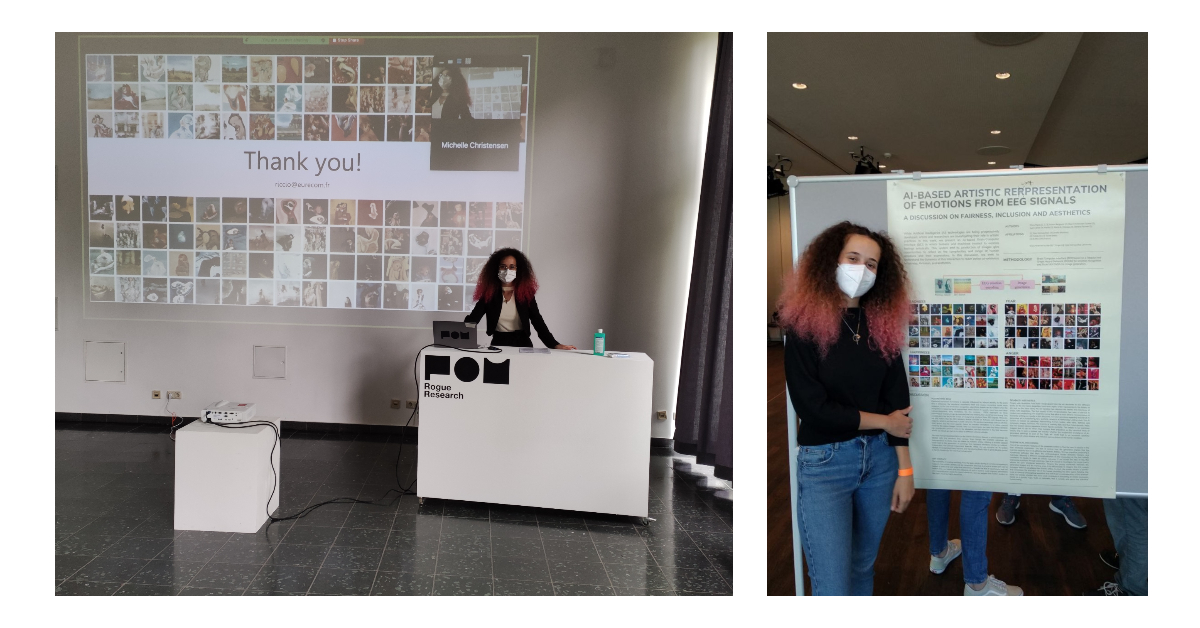Paper presentation by Piera Riccio at POM Berlin 2021
Piera Riccio was a research assistant in the FeLT Project, developing her Master’s thesis, an AI-based Brain-Computer Interface that recognizes emotions from brain waves (EEG) and translates them into original paintings. Such a pipeline, based on state-of-the-art deep learning technologies, generates visual results that allow relevant reflections on the paradigms of communication between humans and machines for artistic purposes. Her work has led to the paper “AI-based artistic representation of emotions from EEG signals: a discussion on fairness, inclusion, and aesthetics”, submitted to the Politics of Machine (POM) conference 2021.
Regarding fairness, the paper focuses on the precautions to take for avoiding algorithmic biases in the emotion recognition process, and cultural influences in the generation of paintings. The aspects related to inclusivity are further explored by analyzing the potential applications of this work in art therapy. In addition, the paper focuses on the role that the interaction with an AI system can have in establishing or reinforcing aesthetic norms in the Art world, specifically relating the visual results to the field of disability aesthetics and classical philosophy.
Piera Riccio presented this paper in Berlin, on the 16th of September 2021, at the venue of the POM conference. The audience has shown great interest in this work, posing relevant questions on different aspects of it: from the perception of emotions and their formalization to the possible therapeutic applications and the artistic relevance of the generated images.
Two weeks later, the paper was also presented during a poster session in the ELLIS doctoral Symposium (EDS21) in Tübingen, referring to an audience of Ph.D. students in AI. Apart from showing a great interest in the design and realization of this pipeline, this technical audience has also posed specific questions on how to reliably evaluate the generated artworks, establishing an enriching debate on the formalization of subjectivities.
Text and photo: Piera Riccio

